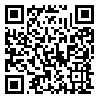BibTeX | RIS | EndNote | Medlars | ProCite | Reference Manager | RefWorks
Send citation to:
URL: http://ijn.iums.ac.ir/article-1-13-en.html
According to Richard Paul, critical thinking (C.T.) is a unique kind of purposeful thinking, in which the thinker systematically, and habitually imposes criteria and intellectual standards upon the thinking, taking change of the construction of thinking, guiding the construction of the thinking according to the standards, and assessing the effectiveness of thinking according to the purpose, the criteria, and the standards.
Critical thinking is very different from criticism it is basically a positive activity, and in fact critical appraisal of situations is a positive and necessary process for growth and development within a society or an organization.
Critical thinking is not confined solely to learning in higher education, but useful in all adult activities, including the interpersonal relationships and working activities. It is also considered an important aspect of professional practice in health, midwifery and nursing, especially in clinical nursing.
Considering that nursing has changed its orientation from a job towards a profession, nurses, consequently, are diverted from task orientation to skill orientation, which requires certain cognitive and communication skills.
Along with the expansion of the scope of nursing there is an ever-growing demand for the development of critical thinking skills in problem solving and decision making. In response to the need for independent decision making in the clinical setting, nursing education has placed great emphasis on C.T. Therefore, nurse trainers must equip their students with such essential skills.
Brookfield offers a ten-point checklist for teaching C.T.:
1) Affirm critical thinkers’ self-worth 2) listen attentively to critical thinker 3) Show that you support critical thinkers' efforts 4) Reflect and mirror critical thinkers’ ideas and actions. 5) Motivate people to think critically 6) Regularly evaluate progress 7) Help critical thinkers to create networks 8) Be a critical teacher 9) Make people aware of how they learn critical thinking and, 10) Model critical thinking .
According to Martin study (2002), “The Theory of Critical Thinking in Nursing” it is shown that C.T, and decision-making abilities increase along with the level of clinical expertise. Thus, the development of C.T. skills is recommend in nursing education.
Received: 2006/12/17 | Accepted: 2014/01/4 | Published: 2014/01/4
| Rights and permissions | |
 |
This work is licensed under a Creative Commons Attribution-NonCommercial 4.0 International License. |




